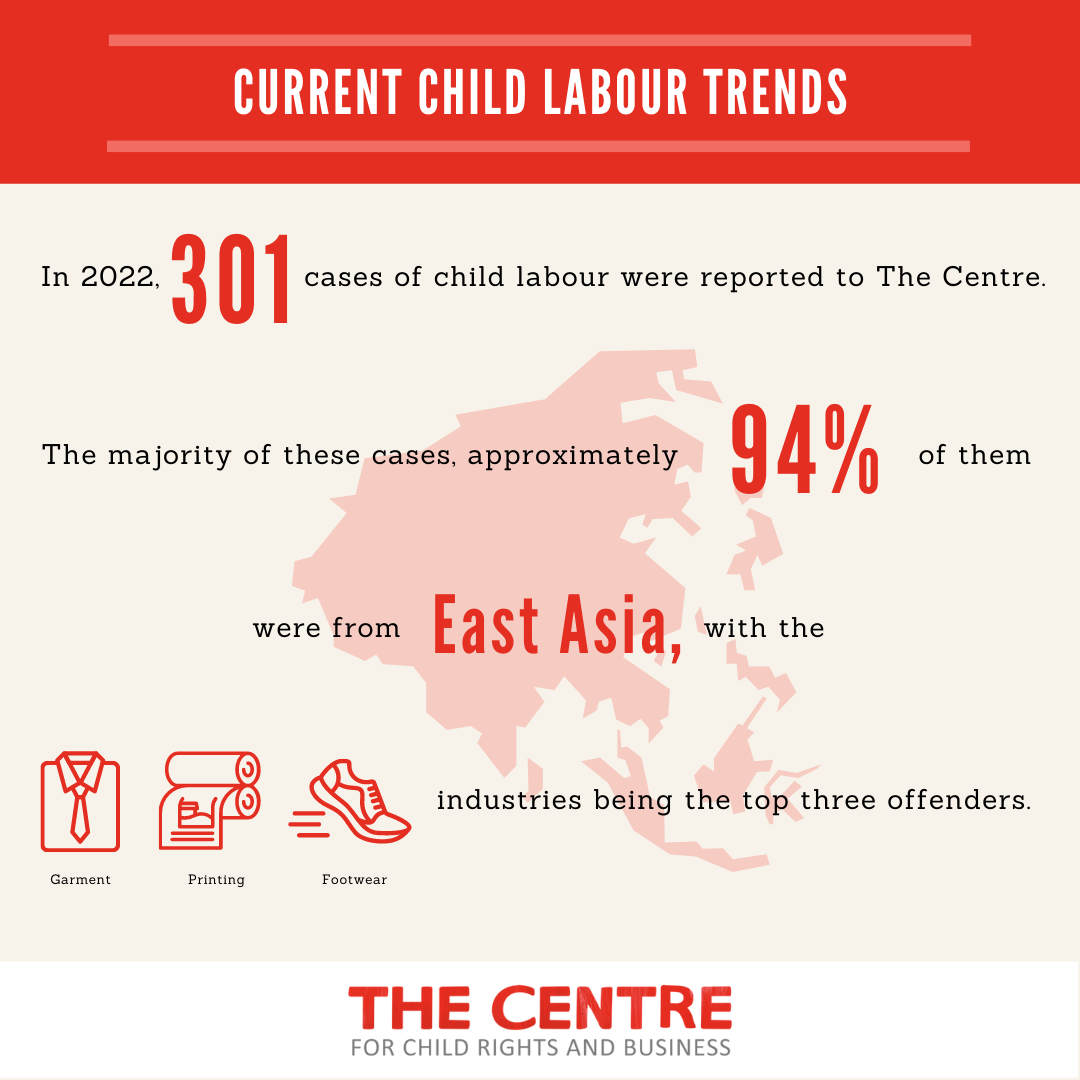

In 2022, The Centre received reports of 301 cases of child labour. The majority of these cases, approximately 94%, were found in East Asia, with the garment, printing, and footwear industries being the top three offenders.
Among the cases for which we have information about their discovery, approximately 80% were identified through announced audits. These audits were critical in uncovering child labour in small-sized factories, which accounted for the majority of the cases. Unfortunately, child labour cases often involve not just underage workers but also young workers engaged in hazardous work.
The fact that the majority of child labour recruitment agents are relatives and neighbours is deeply concerning as these individuals should be safeguarding children, not exploiting them and depriving them of their education, leisure time, and rest. This alarming reality underscores the urgent need for increased education and awareness about the dire consequences of child labour.
Based on our observations, it appears that short-term sourcing strategies may increase the risk of child labour. This is because companies often hire temporary workers to deal with uncertainty in business development and order volume. Unfortunately, this approach can lead to the exploitation of children, as our team discovered in Myanmar. Specifically, we found that approximately 40 children were hired to replace long-term workers, which is concerning.
Furthermore, unauthorised subcontracting facilities remain a significant source of risk for child labour in its worst forms. In fact, our investigation revealed that nearly half of the children working in these facilities were under the age of 13. These children often work in hazardous environments and are found in larger groups when unauthorised subcontracting is taking place.
Therefore, it is critical for companies to ensure that their supply chain practices do not contribute to child labour or other human rights violations. This requires implementing strict due diligence measures, such as regular audits, to identify and address potential risks. By doing so, companies can help protect the well-being of children and other vulnerable populations and promote ethical and sustainable business practices. Greater awareness among stakeholders of the link between child labour and pricing strategy can help prevent this from happening.
If you need support conducting a child labour risk assessment or would like more details on the Centre's child labour remediation services, please contact us.
2025/03/26
ETI Insights Webinar: Mined Minerals & Metals – Challenges & Opportunities in HRDD | April 3By using this website, you agree to our use of cookies. We use cookies to provide you with a great experience and to help our website run effectively.